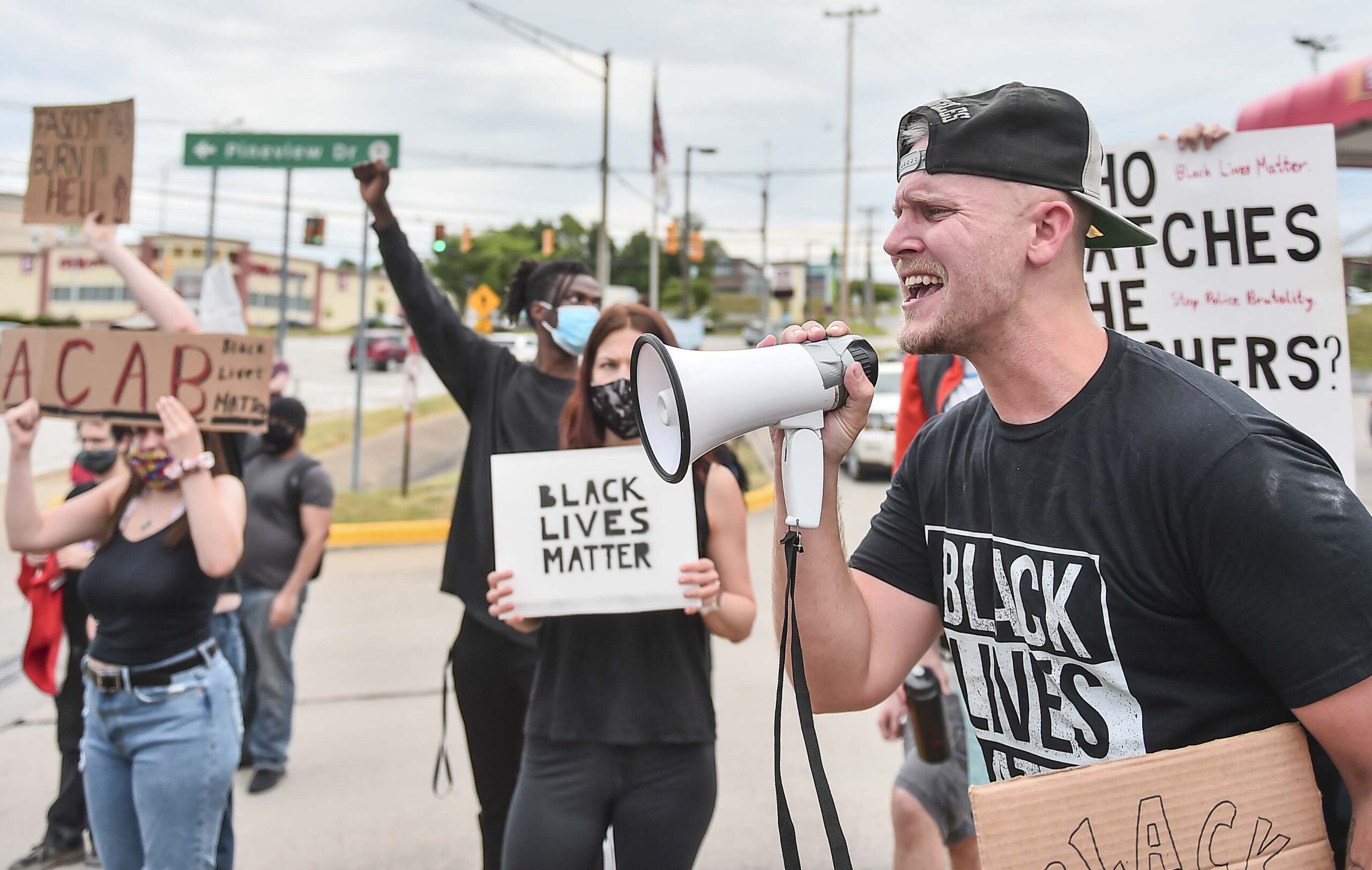For the third Saturday in a row, protesters took to the streets of Morgantown to protest police brutality. Where previous actions focused on downtown Morgantown, primarily the Monongalia County Courthouse and the Mountainlair, Saturday’s march came to Evansdale.
Starting at Raymond J. Lane Park, just outside of West Virginia University’s alumni center, the group marched to the offices of University Police, just off Van Voorhis Road.
Organizers say this is a direct response to University Police Chief W.P. Chedester displaying a “thin blue line” flag during a video conference Wednesday.
“The ‘thin blue line’ sign, and the ‘Blue Lives Matter’ signs, these are direct juxtapositions to Black Lives Matter,” said organizer Samm Norris.
“If you’re going to work on a university campus, you should be knowledgeable enough to know that. Ignorance is not an excuse when you’re working at an educational institute,” she said.
Standing in the University Police parking lot, Norris read out a list of five requests for the university and its police force:
-Prohibit all confederate flags and symbols in all public spaces at the university
-Disarm the University Police force — no more firearms
-Require annual bias training for all officers on the force, as well as a biannual town hall meeting with students
-Revert a significant portion of the university police budget to mental and social work for students, particularly the Carruth Center and the WVU Division of Diversity, Equity and Inclusion
-Foster a relationship between UPD and MPD to improve community relations and in case the need for armed officers arises.
The demands are part of a letter written by WVU students in response to what they perceived to be a lackluster acknowledgement of the Black Lives Matter movement from the university.
“I was incredibly disappointed with how vague the response was and in contrast with how they approached COVID, like with the precision and the time and the money,” said Shay, 34, a graduate student of poetry.
“We need a real plan and we need real action. And you’re going to need to put time and money into this plan of action with the same force, if not more, than COVID-19 was approached,” Shay said. “It’s the same kind of safety issue.”
Protesters marched to Blaney House, residence of WVU’s president Gordon Gee, before marching up Van Voorhis and Chestnut Ridge Road and onto WVU’s medical campus. The more than two-mile-long loop received many honks and cheers of support but was also met with some resistance.
“You see people pass us and they either stare at us, with angry stares, or they tell us to ‘Get a job.’ I specifically heard that several times,” said WVU graduate student Maxwell Shavers, 22.
At times, the march blocked one lane of traffic, a tactic that has become a point of contention for some in the community.
On Thursday, activists who were blocking High Street at Walnut Street narrowly avoided being run over by a group of motorcyclists who refused to yield to the protesters and instead forced their way through the crowd.
“I know its an inconvenience. I understand that,” Shavers said. “It’s an inconvenience for y’all today, but being black has been an inconvenience for me in all aspects of my life for my entire life.”
Tweet @SchulzReports




